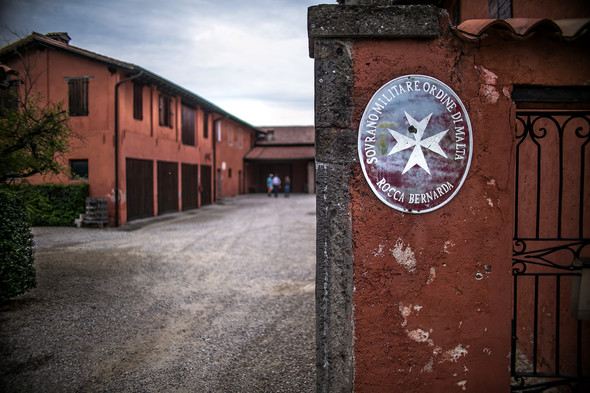An elegant, Renaissance villa with a boxwood garden, high up on a promontory, stands watch over the stunning scenery in Friuli Venezia Giulia, surrounded by terraced, sloping vineyards and century-old cypresses. This is the Rocca Bernarda, built by Giovanni da Udine and previously owned by the Perusini family, it is now in the hands of the Order of Malta, along with other properties around Italy due to the estrangement of two Perusini brothers, Pierluca and Gaetano. Gaetano decided to leave his estate to the University of Udine, who, however, turned down the offer, on the grounds that the 220ha estate with its 38ha of vines was too big for them to manage. He then looked around for someone who could continue production with a scientific approach and chose the Order of Malta.
The cellars below the ‘castle’ date back further than the beautiful villa, previously housing the stables, as does the large rainwater tank underfoot. Dotted around the property are some 14 to 15 houses, which in the past housed the estate’s workers. Gaetano, a generous man, was loved by his workers. They received a litre of milk and two litres of wine per day, an important payment in those days. Rocca Bernarda also boasts a private church, where a mass to celebrate San Bernardo is held with all the farmers in late August each year, followed, of course, by a feast.
The winery is renowned for its Picolit, a local variety preserved by earlier generations of Perusinis. The grapes are hand-harvested and left to dry on lattices in ventilated rooms for a month in order to concentrate the flavours, producing a sweet wine, high in firm, appley acidity. In fact, Rocca Bernarda is in proud possession of the oldest bottle of Picolit in the world, dating from 1882.
Their aim is to produce elegant wines, reflecting the unique terroir and indigenous grape varieties, such as Refosco dal Penduncolo Rosso, Ribolla Gialla and the confusingly named Tocai Friulano. This variety has nothing to do with the Hungarian Tokaj and indeed Hungary complained to the EU about the use of the name Tocai. The EU decreed the name had to go. Nowadays, the name Friulano is used for wines to be exported while Tocai Friulano is still used within Italy.
They also make their special ‘900 Selezione della Fondazione’ each year from Pignolo, a local grape with plum and blackberry flavours and serious tannins, thus needing some years of aging to soften them. Of course, you can’t be in northeast Italy and forego Pinot Grigio; however, the Ramato della Rocca is a modern interpretation of the traditional winemaking techniques for the variety, fermented on the skins for 19 hours, yielding a pinkish wine with onionskin tones, with floral and hazelnut aromas. A step up from the usual insipid Pinot Grigio.






